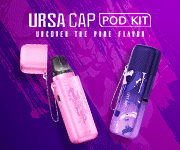K
KulrMeStoopid
Guest
http://www.huffingtonpost.com/brent-green/electronic-cigarettes_b_2918405.html
The nation's tobacco industry is facing one monumental impediment to future growth: a shrinking (and dying) customer base of cigarette smokers.
Business 101 suggests three strategies to strengthen future sales and profits. First, redefine the core business; in this case, shift from relying on tobacco and expand into a broader nicotine business. Second, acquire start-up companies developing leading-edge technologies that deliver nicotine in novel ways. And third, bring in new customers who will sustain the core business into the future.
In 2007, the seeds of these strategies were planted in the U.S. -- not in tobacco fields but in high-tech labs. That season's robust harvest featured electronic cigarettes, also called e-cigarettes or e-cigs. And the potentially addictive consumer habit propelling this market's growth is calledvaping.
Vaping is vernacular for "smoking" electronic cigarettes, a technology invented allegedly by a pharmacist in China that allows nicotine to be atomized and delivered through electrically powered pseudo-cigarettes. E-cigs produce no odor, and what appears to be smoke is actually vapor, thus "vaping." Street argot for this 21st century technology includes "eGo," "tailpiping," "juice carto," "throat hit," and "dripping."
On the one hand, electronic cigarettes can be construed as a blessing. E-cig smokers receive atomized nicotine mixed with compelling flavors called "smoke juice." Imbibers don't inhale roughly 70 known carcinogens associated with burning tobacco products. Their exhalations purportedly don't disseminate harmful second-hand smoke.
Vaping provides an alternative habit for long-term cigarette smokers, helping reduce some of their risks for developing lung and heart diseases. Potential public health benefits are noteworthy and persuasive.
On the other hand, this new nicotine-delivery technology has foreboding implications, especially when coupled with sophisticated marketing techniques promoting vaping behavior via traditional media and online.
First introduced in Europe in 2006 and then in the U.S. in 2007, e-cigarettes heralded a significant alternative to traditional cigarettes, buttressed by claims that e-cigs reduce carcinogens and other toxicants to below harmful levels. The sales potential did not go unnoticed by the tobacco industry.
In April 2012, Lorillard, Inc., the third largest cigarette manufacturer in the U.S., purchased one of the niche brands called blu Ecigs for $135 million. And that's when the marketing game really changed. This was a watershed moment in the short timeline of e-cigs.
Manufacturer and marketer of stalwart cigarette brands such as Kent, Newport and True, Lorillard has amassed the resources and marketing sophistication that consumers associate with classic cigarette advertisers. And they're applying these assets to their newest acquisition, blu.
Tobacco companies dominated advertising share-of-voice on television in 1969. But just before midnight on December 31, 1970, American television viewers witnessed the final national ad supporting nicotine-based, smoke-able products on The Tonight Show Starring Johnny Carson. Nevertheless, in the fall of 2012, blu rolled out nationally with a black & white television spot featuring actor Stephen Dorff.
Known for his film roles such as the evil vampire Deacon Frost in the superhero horror movieBlade, Dorff addresses television and online viewers with macho self-confidence as he defies forces that have limited his twenty-year smoking habit. Dorff pronounces, "We're all adults here. It's time we take our freedom back. Come on guys, rise from the ashes."
<center><iframe src="http://www.youtube.com/embed/VZishwAt_RM?rel=0" frameborder="0"></iframe></center>Through Dorff's forthright declarations, viewers might perceive other contextual messages. Bluseems to be appealing to iconoclastic young men since men tend to take up smoking in larger proportions than women. Vaping can be also about asserting independence, even defiance of conventional social standards, much like the movie and TV characters portrayed by Steve McQueen, the late Hollywood icon who promoted Viceroy cigarettes.
Lorillard may be resurrecting classic tobacco branding techniques by associating its blu brand with macho self-reliance and anti-authoritarianism, the DNA of emerging manhood, similar to some of the emotional triggers that so successfully hooked adult males on cigarettes in the 1950s through the 1970s.
Considering over 60 years of tobacco marketing history, especially tactics popular during the 1950s and 1960s, it seems reasonable now to wonder if the e-cig marketing focus might shift from current cigarette smokers to prospective vapers, from nicotine retention to trial, and from middle-age users to young adults, even teens. E-cig marketers appear to be embracing all the subliminal and obvious consumer associations between their new products and tobacco cigarettes -- except unsavory association with cigarette smoking (as in producing carcinogenic smoke, second-hand smoke, anti-smoking).
Although industry proxies profess that their e-cig marketing targets only the 45 million active adult smokers through mass media advertising, marketers also know that two principles govern ad delivery in mass media. The target may indeed be adult smokers and ads have indeed been placed with age-appropriate programming; however, the broad reach of television and other mass media inevitably has significant spillover to nonsmokers and even teens under 18.
NJOY King, an aggressive competitor to blu, ran a national television ad during the 2013 Academy Awards, reaching a potential cumulative viewing audience of 42.40 million, most certainly including significant numbers of pre-teen and teen viewers. In this television spot, a vigorous, unshaven man appears to smoke a traditional cigarette, from ash tip to filter. He exhales smoke with an expression of sublime pleasure. The pack looks like the real deal. The background sound bed comes from Foreigner's 1977 debut song, "Feels Like the First Time." (One can only wonder how many teen viewers considered an e-cig for the very first time.)
The nation's tobacco industry is facing one monumental impediment to future growth: a shrinking (and dying) customer base of cigarette smokers.
Business 101 suggests three strategies to strengthen future sales and profits. First, redefine the core business; in this case, shift from relying on tobacco and expand into a broader nicotine business. Second, acquire start-up companies developing leading-edge technologies that deliver nicotine in novel ways. And third, bring in new customers who will sustain the core business into the future.
In 2007, the seeds of these strategies were planted in the U.S. -- not in tobacco fields but in high-tech labs. That season's robust harvest featured electronic cigarettes, also called e-cigarettes or e-cigs. And the potentially addictive consumer habit propelling this market's growth is calledvaping.
Vaping is vernacular for "smoking" electronic cigarettes, a technology invented allegedly by a pharmacist in China that allows nicotine to be atomized and delivered through electrically powered pseudo-cigarettes. E-cigs produce no odor, and what appears to be smoke is actually vapor, thus "vaping." Street argot for this 21st century technology includes "eGo," "tailpiping," "juice carto," "throat hit," and "dripping."
On the one hand, electronic cigarettes can be construed as a blessing. E-cig smokers receive atomized nicotine mixed with compelling flavors called "smoke juice." Imbibers don't inhale roughly 70 known carcinogens associated with burning tobacco products. Their exhalations purportedly don't disseminate harmful second-hand smoke.
Vaping provides an alternative habit for long-term cigarette smokers, helping reduce some of their risks for developing lung and heart diseases. Potential public health benefits are noteworthy and persuasive.
On the other hand, this new nicotine-delivery technology has foreboding implications, especially when coupled with sophisticated marketing techniques promoting vaping behavior via traditional media and online.
First introduced in Europe in 2006 and then in the U.S. in 2007, e-cigarettes heralded a significant alternative to traditional cigarettes, buttressed by claims that e-cigs reduce carcinogens and other toxicants to below harmful levels. The sales potential did not go unnoticed by the tobacco industry.
In April 2012, Lorillard, Inc., the third largest cigarette manufacturer in the U.S., purchased one of the niche brands called blu Ecigs for $135 million. And that's when the marketing game really changed. This was a watershed moment in the short timeline of e-cigs.
Manufacturer and marketer of stalwart cigarette brands such as Kent, Newport and True, Lorillard has amassed the resources and marketing sophistication that consumers associate with classic cigarette advertisers. And they're applying these assets to their newest acquisition, blu.
Tobacco companies dominated advertising share-of-voice on television in 1969. But just before midnight on December 31, 1970, American television viewers witnessed the final national ad supporting nicotine-based, smoke-able products on The Tonight Show Starring Johnny Carson. Nevertheless, in the fall of 2012, blu rolled out nationally with a black & white television spot featuring actor Stephen Dorff.
Known for his film roles such as the evil vampire Deacon Frost in the superhero horror movieBlade, Dorff addresses television and online viewers with macho self-confidence as he defies forces that have limited his twenty-year smoking habit. Dorff pronounces, "We're all adults here. It's time we take our freedom back. Come on guys, rise from the ashes."
<center><iframe src="http://www.youtube.com/embed/VZishwAt_RM?rel=0" frameborder="0"></iframe></center>Through Dorff's forthright declarations, viewers might perceive other contextual messages. Bluseems to be appealing to iconoclastic young men since men tend to take up smoking in larger proportions than women. Vaping can be also about asserting independence, even defiance of conventional social standards, much like the movie and TV characters portrayed by Steve McQueen, the late Hollywood icon who promoted Viceroy cigarettes.
Lorillard may be resurrecting classic tobacco branding techniques by associating its blu brand with macho self-reliance and anti-authoritarianism, the DNA of emerging manhood, similar to some of the emotional triggers that so successfully hooked adult males on cigarettes in the 1950s through the 1970s.
Considering over 60 years of tobacco marketing history, especially tactics popular during the 1950s and 1960s, it seems reasonable now to wonder if the e-cig marketing focus might shift from current cigarette smokers to prospective vapers, from nicotine retention to trial, and from middle-age users to young adults, even teens. E-cig marketers appear to be embracing all the subliminal and obvious consumer associations between their new products and tobacco cigarettes -- except unsavory association with cigarette smoking (as in producing carcinogenic smoke, second-hand smoke, anti-smoking).
Although industry proxies profess that their e-cig marketing targets only the 45 million active adult smokers through mass media advertising, marketers also know that two principles govern ad delivery in mass media. The target may indeed be adult smokers and ads have indeed been placed with age-appropriate programming; however, the broad reach of television and other mass media inevitably has significant spillover to nonsmokers and even teens under 18.
NJOY King, an aggressive competitor to blu, ran a national television ad during the 2013 Academy Awards, reaching a potential cumulative viewing audience of 42.40 million, most certainly including significant numbers of pre-teen and teen viewers. In this television spot, a vigorous, unshaven man appears to smoke a traditional cigarette, from ash tip to filter. He exhales smoke with an expression of sublime pleasure. The pack looks like the real deal. The background sound bed comes from Foreigner's 1977 debut song, "Feels Like the First Time." (One can only wonder how many teen viewers considered an e-cig for the very first time.)













